#1900s undergarment
Text
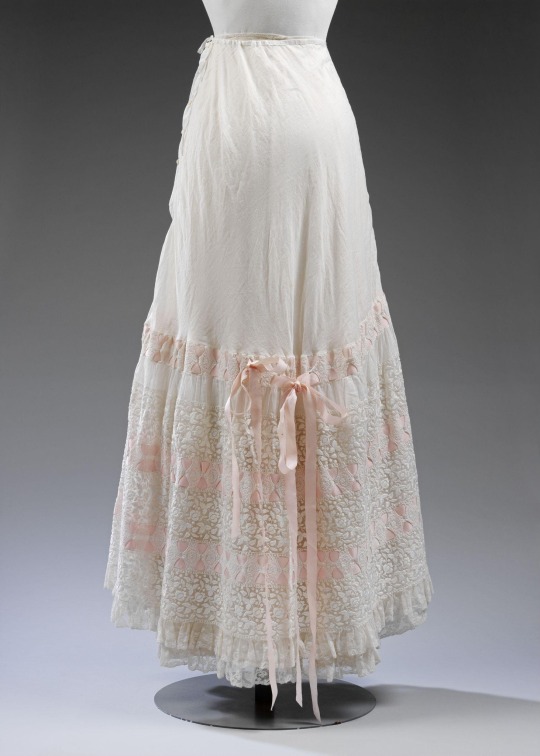
White Cotton Petticoat, ca. 1906, English.
Worn by Miss Heather Firbank.
Victoria and Albert Museum.
#V&A#1906#1900s#1900s petticoat#petticoat#1900s England#1900s Britain#cotton#womenswear#extant garments#1900s extant garment#English#British#20th century#Heather Firbank#undergarments#1900s undergarment
235 notes
·
View notes
Text

Underpinnings (1900-03)
0 notes
Text
Okay y'all please reassure me:
You know corsets are undergarments, right. Like, historically. You all know this?
I assumed it was common knowledge but I just read with my one good eye the imperial princess Anastasia having some dude she's met like four times cut the laces of her corset in a corner of a ballroom at a ball and toss it into a potted plant and I had a moment of trying to figure out the logistics of a court gown being that easily removable but a corset in the early 1900s not being easily unlaceable
And then I realized
She did not take off the dress.
Meaning the author is under the impression that a 13 year old imperial princess in imperial russia would wear what is essentially her bra on the outside of a ballgown with full court regalia.
So please, people. We know that historically corsets were undergarments right??????
100 notes
·
View notes
Text
Late Victorian British Fun (and not-so-fun) Facts
I thought others might be interested in my list of little things I've learned while researching the 1890s for my fics. This is by no means a list of things you should do when writing! Even I don't follow absolutely every single thing—I like to think wizarding society deviated quite a bit from muggle society, after all. If you wanna use this list as a reference, go ahead, but you should write whatever makes you happy. This is just for fun, and I'll probably end up writing down more stuff as I remember it—this is all just the stuff I could think of from the top of my head. :)
Basics
The Victorian Era was from 1837 to 1901. The era before was called the Regency Era (think Jane Austen) and the era after was the Edwardian Era (think Downton Abbey).
Love and Marriage
Even though the marriage age was lowered significantly in 1823, most girls still got married between ages 18 and 23.
The social season refers to the summer months from May to August in which the middle and upper classes left their country homes and stayed in London to attend social events, following the royal family. The main purpose was finding someone to marry.
Courtship, the part of a relationship that was most like dating today, only lasted a few months before progressing to being engaged. But it was common for engagement to last much longer. Dating as we know it today wasn't really a thing until after 1900.
Courtship "dates" that weren't in public often consisted of dinner at the woman's house with her parents (private time between the couple was sometimes afforded after dinners).
There was a paradigm shift in attitudes towards marriage; marrying for love became much more common in this era. But marriages were still pragmatic, too! Marriages based purely on love while ignoring the economic and practical aspects were scandalous.
Queen Victoria popularized white wedding dresses as we know them today.
It wasn't until the late Victorian Era that evening weddings became acceptable.
Snakes were a popular motif for engagement rings in the Victorian Era.
Pregnancy and Children
Victorian women were expected to hide all signs of their pregnancy, as it would imply participation in the act required for pregnancy (yeah, lol).
Husbands weren't allowed to be around for the actual act of childbirth, and it was advised he only stay around for 5 minutes afterward.
Anesthesia was first administered in the mid-1800s.
Fathers were often very involved in their children's lives, contrary to popular opinion.
Teenagers haven't changed much since the Victorian Era—our MCs weren't the only troublemakers. :)
Clothing, Personal Care and Fashion
Eyebrows came in all shapes and sizes; no one style appears to have been particularly coveted. The only exception was an aversion to unibrows.
Natural beauty was the name of the Victorian game. As such, makeup was very un-virtuous and was reserved for prostitutes and actors.
That doesn't mean people didn't use any products, however! Salves for the lips, as well as powders and rouges, started becoming popular towards the end of the era.
Perfumes and colognes were kept subtle, but floral scents were very popular amongst both men and women. Again, emphasizing the natural state of the body was seen as very virtuous.
Shapewear was just as popular back then as it is today. Adding or taking away layers of women's undergarments depended on the effect one wanted to have.
Men's undergarments were much simpler, usually consisting of cotton drawers and a long-sleeved undershirt.
Shorter skirts were appropriate for young girls, but as a girl got older, her skirts generally got longer.
School was still relatively uncommon for girls through the end of the era, but school uniforms for girls generally included aprons to protect their clothes.
Very long hair was desirable for Victorian women and was considered very feminine, but wearing that hair loose was not respectable. Bangs (fringes) weren't very popular.
The 1890s introduced the Gibson Girl look that would carry through the Edwardian Era.
Women wearing trousers was not as uncommon as one might think!
Bathing at least once a day was considered essential, but showering was not yet a thing.
Games, Leisure and Sports
Parlour games were very popular with adults at parties. Charades was an especially prevalent game.
Board games were also very popular for both children and adults.
Football (not American football!) became very popular in the Victorian Era amongst men. Croquet was the game of choice for women.
Cemeteries were popular picnicking spots and were more like sculpture gardens than grim reminders of death.
Food and Cooking
Honestly just go watch English Heritage's Victorian videos for an idea of the recipes and foods that were common back then lol. Mrs. Crocombe is a gem.
Breakfast was often a major event for wealthy Victorian Britons.
Ok that's all I can think of for now. I'm sure there's way more I'm missing. If I can come up with enough, I'll do another post at some point lol. Enjoy!
#victorian era#bonus points if you can recognize the bits I've used in my fics lol#ummmm idk what other tags to use oops#hogwarts legacy#references
327 notes
·
View notes
Text
Undergarment ensemble
c.1900

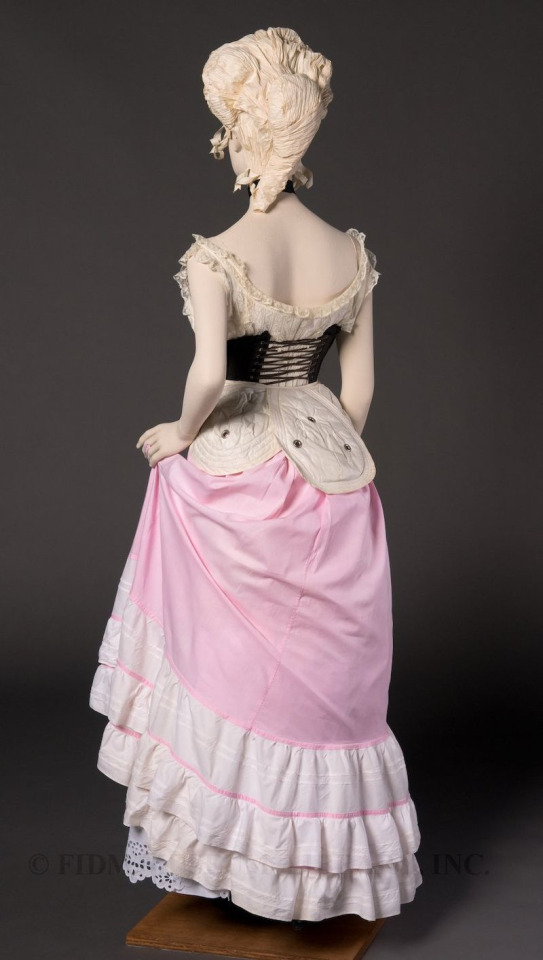
FIDM Museum
143 notes
·
View notes
Text
☆Update 2:☆
I remembered to take pics today! Sort of. Only after i had put away my machines and stuff...
Here are (most) of my edwardian undergarments
(i am wearing modern clothes under bcs the internet is weird)
Chemise, bustle pad, underbust corset, petticoat
I still need to make a corset cover someday, ive just been using a second thin chemise over all this:
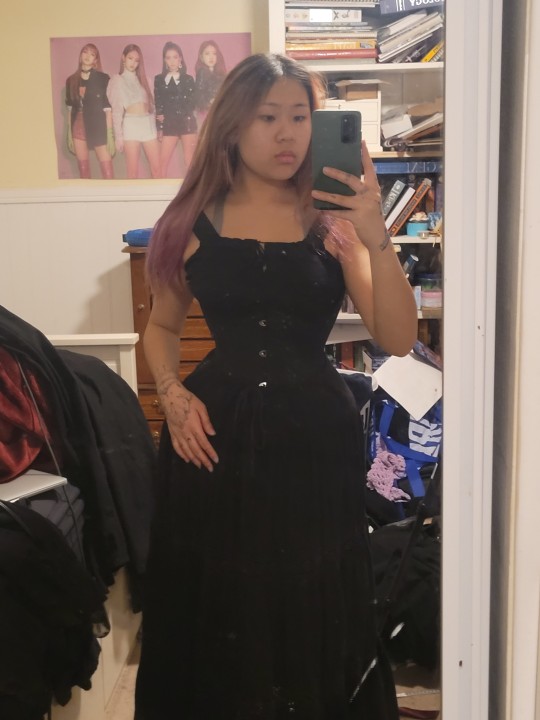
I used these vintage buttons on the cuffs. I wanted some more security but ran out of buttons so i used small snaps:
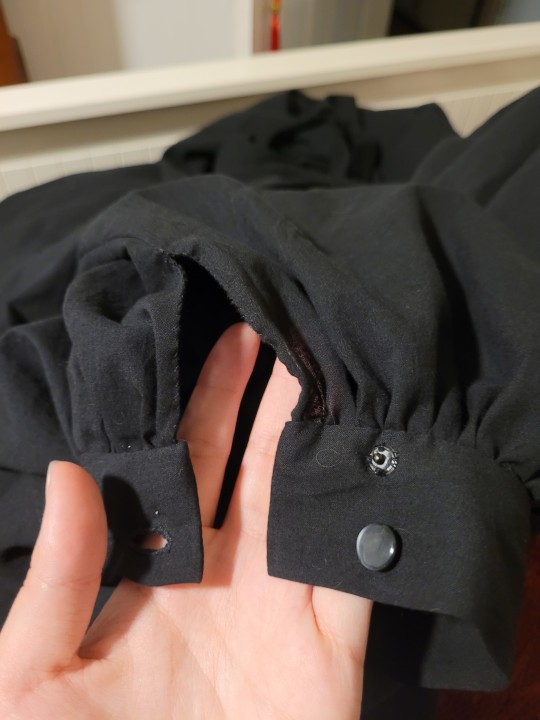
Also put one on the collar so i could try it on. I think the placket at the back of the blouse is a little ugly and larger than ive seen in extant garments but i forgot to adjust the pattern for my broad shoulders and need the extra width for comfort.

I tried on the blouse and skirt together:

I may need to loosen the waistband of the skirt, the corset is a bit bulkier than i thought itd be. Also the blouse is just stuffed into the skirt and currently only has one closure on at the collar so it looks a little bit disproportionate. The belt/sash will help smooth everything out so i dont look like im drowning in voile.
I might go without the bustle pad during the final shoot because i think it gives too much volume in the waist/hip area for edwardian tastes. Its from an 1890s pattern, so the silhouette is a bit out of date. I should probably try the skirt on without the pad before extending the waistband though.
Im pretty happy with how the sleeves turned out! I have some vintage nottingham lace i bought on etsy from penelope textiles that i was going to add to another project. I think ill sew some different laces together and add it to the cuffs to elongate them a bit. Since this dress is supposed to be from roughly 1905, i want the sleeves to look as they wouldve in that time. The photos ive seen mostly feature large ruffles at the ends of elbow-length sleeves but i dont think ill be likely to wear ruffles very often. Ive also seen tighter cuffs that extend from the elbow to mid-forearm or from the elbow to wrist. I think the elbow-length sleeves are a feature of afternoon dresses but i could be wrong. Maybe that was just day dresses? Not sure.
Im also not sure if i want to get gloves/a hat/parasol for this project. On one hand, it would look really cool for the video. On the other hand, it sounds quite expensive and i doubt ill wear it again. I dont want to buy things i wont use and create waste, theres enough of that in fashion. I have a pink 1900s parasol that i might cover with black fabric, but idk.
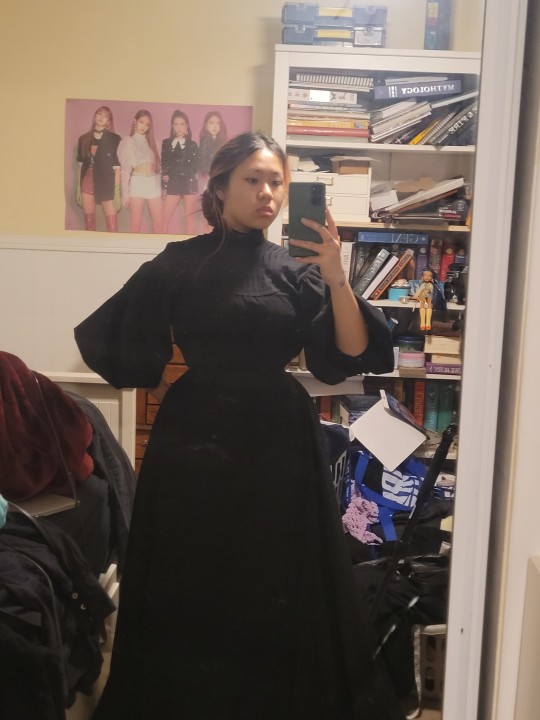
There isnt much left to do! Im gonna make a list here so i have it written somewhere:
-sew snaps onto blouse
-finish blouse hem
-attatch lace cuffs
-press pleats on sash/belt
-order synthetic whalebones
-add bones, hook/bars to belt
This is just the sewing tasks though, i need to edit the video clips and record audio. I have no idea how to do any of this. I just downloaded davinci video editor so hopefully i can figure it out. The only experience i have with video making/editing was in 3rd grade on ipads on the imovie app. Ive just been binge watching bernadette banner videos bcs i love her video style.
Any tips/feedback are much appreciated! ♡
Date: 4/22/24
#edwardian fashion#1900s#early 1900s#edwardian era#edwardian#victorian mourning#victorian dress#victorian era#victorian fashion#fashion history#historical costuming#historical dress#historical fashion
83 notes
·
View notes
Text



White Cotton Petticoat, ca. 1905, English.
Victoria and Albert Museum.
#petticoat#1900s petticoat#1905#1900s#1900s England#1900s Britain#British#English#cotton#white#V&A#extant garments#womenswear#1900s undergarment#1900s extant garment#undergarments
141 notes
·
View notes
Text
Rdr2 and period accuracy I guess
Bonus points to whoever was in charge of historical details in rdr2 because the amount of spot on, God awful hair and beard styles makes me so happy. 1800-1900 were some of the worst years for decent haircuts. Clothes? Great, wonderful. BUT MUTTON CHOPS??? That stupid middle part slicked-back hair for men? Crimes. War crimes.

Look at this shit. You see this??? Some of these fellas have attractive faces but then they ruined it by doing THAT. Civil war era and regency period are my absolute least favorite times for men. How do you let that hair rope stay on your face?? Half of them look like they're wearing toupees or desperately combing the last bits of balding hair (some of them are, to be fair). Half the NPCs in red dead are utterly unfuckable and I love it. It's really cool when media lets people be ugly and grimy. A lot of the people Arthur comes across are poor, working class people who were often a little gross, especially men living on horseback doing a lot of manual labor. The women wear makeup, but they're not overly polished Hollywood esque pantomimes of historical women. They're allowed to be a little nasty too. Karen absolutely has the pussy equivalent of the Chernobyl elephant's foot and I love that for her! Sometimes media overdoes the unclean factor and makes it like...a metaphor in and of itself for low morals (Pirates of the Caribbean I love you but yeah). Your main characters are shiny and clean where villains are dirty and "unclean".
This is not to say poverty=dirt. At the time though, extreme poverty in cities and places with no natural water sources did equal a bit of funk. They just couldn't afford to pay for baths. Those who cared used perfumes, sponge baths when available. They kept their undergarments regularly washed if they could. The thing is, just like today, some people just didn't care. They lived in the woods and said "fuck it" and didn't bother. Rdr2 says "yeah ain't nobody is washing their ass ♥️" and let that apply to our protagonists too! No matter how much you bathe Arthur that man wears boots with no socks and it's so bad even Sean comments on the man's feet. I can't even wear Crocs without socks because that shit is a biohazard. Imagine BOOTS.
I don't know where I was going with this, but the overall gist is that we should strive for accuracy and a fair portrayal of human bodies as things that do in fact produce ick. And that's okay! You can be hot and also have lack of access to modern hygiene. Unless you have mutton chops, I guess.
#red dead redemption 2#rdr2#History#Historical rant from an anthropology nerd#arthur morgan#Karen Jones#red dead redemption
63 notes
·
View notes
Text

Torii Kotondo (Japanese, 1900-1976)
Long Undergarment
136 notes
·
View notes
Note
hello! i am a longtime huge admirer of your clothing/fashion sense, as well as a longtime backreader of your #victorian and #goth tags. i am really interested in what you've written about Victorian dress, and i am looking to get more into 19th and 20th century clothing for gender + diy craft reasons. i'm so sorry if you've answered similar questions before, but do you have any tips for where a newbie should start researching? either way, thank you thank you, your blog opens my mind wide and brings me much joy and reflection!
General research:
Spend some time searching the 'net, museum websites, and archive sites for fashion plates (such as archive.org—link leads to a date-restricted query for "fashion"—or the Smithsonian—link leads to fashion plates in their image collection). Take note of what you like, as well as which styles correspond to which decade. Karolina Żebrowska has a good rundown of English fashion over the decades.
The undergarments are what does the most work creating the necessary silhouette to make Victorian & Edwardian womenswear fit properly. If you've figured out a decade you want your outfit to draw on, doing a quick search for "[decade] undergarments" should bring up plenty of blog posts, which may or may not cite primary sources (such is the fickle nature of the historical blogosphere). Bustle pads and sleeve supports can be purchased or made; they're both pretty simple, and tutorials abound.
Purchasing clothing:
Reproduction made-to-measure clothing can be readily found on etsy, but can be in the several-hundred USD range. I've had some luck finding vintage reproduction clothing (like, a skirt someone made by hand in the 1980s to a 1900s walking skirt pattern), which tends to be much cheaper.
Men, women, and children wore stays and corsets. As far as I know, Orchard Corset has the cheapest OTR corsets that are good quality and safe to wear. If you get a corset in the style of a specific decade handmade or made to measure, make sure that the seller tells you what the boning material is, what construction the boning is (spiral steel is sturdiest and most flexible), how many bones there are, what the corset material is, &c.—otherwise it's an indication of an unserious maker. Follow general advice for wearing corsets at a waist reduction (lace up slowly, break it in, &c.).
Antique Menswear on youtube gives a lot of good, practical advice for wearing late 19th-century and early 20th-century men's clothing (including where to buy reproductions and how to treat them, how to modify modern shirts to 19th-century standards with basically no sewing skills, &c.).
Actual antique clothing can be found and purchased online or at estate sales—usually in very small sizes, but I've seen Edwardian skirts and petticoats in an XL (also a small size, but...). You can also just simply browse this kind of thing for inspiration and save photos of anything you think you'd like to recreate.
Even clothing that was not "meant" to be worn by re-enactors can be clearly historically influenced (e.g. the huge boom in Victorian- and Edwardian- style blouses in the 1980s), so keep an open mind when shopping for vintage clothing! A lot of 1970s dresses that look "hippy" on their own can look very Victorian with the right undergarments and an updo. A lot of 1980s men's trousers also approach the right silhouette for the 1910s-inspired three-piece suit I'm trying to put together. Witness also the recent trend for big puffed sleeves!
Making or modifying clothing:
Victorian and Edwardian manuals for garment drafting and sewing can be found online—go to archive.org and search for "sewing," "drafting," or "dressmaking," then use the filters on the left to chuse which year(s) you want to see results from. Most of these have patterns that are sort of vibes-based: The work-woman's guide is one manual that claims to have patterns laid out strictly according to a grid.
I don't sew garments, but if Victorian pattern-writing for sewing is anything like it is for knitting, that may not be super useful. People do sell updates and graded 'translations' of antique patterns (which tend to be written in only one size) on etsy and ebay—just make sure from the description that it's 'deciphered' and translated rather than a scan of the original pattern!
One of the easiest things that you can do to add some Victorian or Goth flair to an otherwise plain-looking garment is to add trim. You can knit, crochet, or tat your own trim from Victorian lace-making patterns; purchase antique trim from resale sites; or buy braided or lace trim very cheaply at any craft store. Trim doesn't just have to go around the hems and cuffs of a garment: lace "insertions" between two pieces of fabric, as well as raised geometric patterns over the surface of a garment, are common in 19th-century clothing.

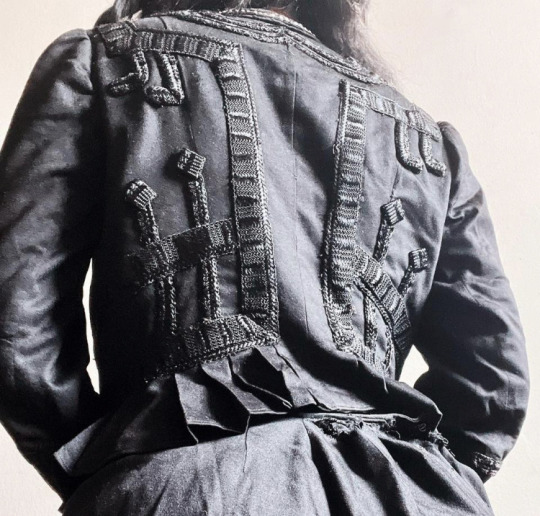
[ID: first image shows a black overdress showing lace insertions between strips of fabric of equal width, creating a striped effect. second image is the back of a black blouse with trim in a geometric design centred around right angles and parallel lines. end ID]
Jewellery (women's and men's):
Actual antique jewellery (including men's jewellery and fastenings) is not as expensive as you might think. Even if you're not willing to spend a lot of time learning what to look for and scouring estate sales for people who don't know or care what they have, late Victorian mass-manufactured costume jewellery often goes for sub-$50 or even $30 prices at auction on ebay (USD, in the US—in my experience it is even more plentiful and cheaper in the UK).
Specifically, I've lucked out with lots ("lot" as in, a bunch of small things being sold together) of "vintage men's accessories" going for $20 or so that contained Victorian cufflinks (in low-karat gold, mother-of-pearl, and jet), collar studs (in low-karat gold and base metals), and shirt studs (in low-karat gold, with garnets and seed pearls, &c.). Searching for lots of accessories is generally a good idea since by and large people do not know what these things are... but if you're willing to spend a little more for something that has been identified and is more likely to still be with its set, use the specific search term for that item (e.g. "antique collar studs").
Answers to Questions About Old Jewelry (though aimed at estate sellers and, if memory serves, full of regrettable pæans to Queen Victoria) is a good reference text to dating antique jewellery. I also recommend Miller's Illustrated Guide to Jewelry Appraising. Both of these texts are available on libgen.
Feel free to ask me follow-up questions if you want more detail on any of these points. As you can see I am perfectly happy to blather away on this topic
83 notes
·
View notes
Text
PART 7 The prey
Yautja(prey) x reader
Warnings: Predator/prey kink, sexual, smut, we monster fudging tonight people, ABO, heats, explicit, swearing
(1900s eraish)
Last part <-

You awoke slowly, making a small grunt when you felt a low vibration beneath you. You were lying on leathery skin and flushed furiously before relaxing. You opened your eyes, feeling big arms around you, was he asleep too? He wasn’t purring anymore, more like a light snore that vibrated through his chest. Your mind was clouded again, you traced random patterns on his chest, the skin surprisingly soft. The ‘snoring’ stopped and small clicks filled your ears before you lifted your body too look at him. His arms slid off your form as you sat up, he was clearly still half asleep.
“Morning” you muttered watching his mandibles move out. He stretched them out before opening his mouth and yawning. You chuckled softly the action strangely vulnerable. You wondered why he wore a mask, did it help with breathing? His sight? Senses? You didn’t know. He sat up making you slid onto his lap, feeling the hardness against your clothed heat.
He purred then, eyes staring at you. You gulped standing up on shaky legs and slowly discarding your clothes. The hunter watched with hungry eyes, almost laid back as he enjoyed the show. Gulping you slid off your undergarments and sat on his thighs. He wore a cloth, tied on, you undid the tie, his purr still going. You had extremely shaking hands and wanted to die of embarrassment so you gave up on the garment. You rested against his chest biting your nail in nervousness. The purring stopped, a clicking in question coming to your ears. You felt a clawed hand spread out on your exposed back, a low growl leaving him. He pushed you up and you heard a clink. Your cheeks went hot and you wanted to scramble under the furs and hide. The purring resumed, and you were slowly lowered onto his hard cock. You groaned and panted, it still hurt and stretched but less than the first time. You let out whimpers and pants before you were finally full of him. You couldn’t lift your top half up, thankful he sat up though before hand. He moved out slightly and you whined loudly before he went back in fully. You finally abled your body to lift up, you looked at him, mind fuzzy. You couldn’t really concentrate as you found the strength to lift your hips up slightly then back down. You closed your eyes and panted, doing the movement again and again before you set a slow pace. You hung your head, your hair a mess already. Your legs hurt and strained though, you bottomed out and stopped leaning your forehead against the hard chest. He growled lowly, satisfaction almost before his hands gripped your hips and he moved you. You whined, highly embarrassed about how you sounded right now, but also not caring as he thrusted into you. Gods you were full and hot, too hot, you were sweating.
You were like a doll in his hold as he snapped his hips up, earning a groan from both of you. He set a quick pace, having more stamina than you ever could. Your mind was cloudy and you stomach clenched. Your hand moved by itself, resting against your clit and beginning to rub. You groaned loudly, quickening your pace with his. You panted loudly by his neck, listening the satisfying low growls he gave. You wanted to mark him too, your teeth probably would pierce the skin though, he was covered in leather armour.
You cried when you came, biting down anyway, you heard him growl loudly, leaning his head back and to the side. You felt his knot stick and groaned as you clenched around him. You let go of his neck seeing no damage done but a light indent making you whine sadly. You struggled with your breathing as he slowly thrusted into you a little more before stopping. You shook on top him, eyes closed as exhaustion took over. You felt like pure jelly, no muscle in your body wanted to move. You made a small grunt when he shifted slightly before settling again. You grumbled about it before a yawn escaped you. He began his pure again, a little off rhythm due to his heavy breathing. You smiled though, nuzzling closer and letting yourself drift off.
Next part ->
Notes: sorry been dealing with some writers block.
Taglist
@lady-charinette
@takottai
@sugabebe16
@xxyaoi-nationxx
@perseny
@purplekitten30
@nightsong
@itzarat1900
@our-lilly
@blackdeawing14
@lulu-83
@curious-expectations
@jj-ma26-rb
@kaislashes
@theamericanjewitch
486 notes
·
View notes
Note
Why did the early-mid century culture hate the victorians so much? Was it just "my grandparents lived through it so I associate growing up around this stuff with being outdated and yucky" kinda like how I've seen the 1970s-80s regarded? Or was there something else going on there culturally?
I suspect it's partially that, and partially just. How much everything changed aesthetically in a relatively short span of time.
I mean, if you look at the feminine fashion differences between 1860 and 1880, the trim and silhouette obviously differ greatly but the basic composition of the outfit is the same. Same under-layers, same general bodice-and-skirt format for most dresses, same hemlines, same broad expectation for the hair (long, mostly one-length, natural colors) even though the popular styling of women's updos changed.
and then you look at, say, 1905- Edwardian, but that same general outfit format -to 1925.

(Le Costume Moderne, 1905.)

(The Delineator, 1925.)
There had been radical aesthetic shifts over relatively short periods before- see also: 1780 vs. 1800 -but to my knowledge few of them involved changing the composition of outfits so radically. The 1920s saw the beginning of the now-familiar bra and panties model of conventionally feminine undergarments, for example, as opposed to the immediately prior "chemise and drawers, or combinations, and corset" model. In a very real way, that decade seems to me to have introduced the way we wear clothing today. Obviously some things like girdles and slips have mostly fallen by the wayside, but. It's the beginning of a clothing system that seems vastly more familiar to most of us now than what came before. And with that shift came a lack of understanding of how the earlier model actually worked in everyday life. Combined with new strides being made in women's rights compared to the previous status quo, it could be all too easy to see such totally foreign fashions as awkward and oppressive.
Also it was very much a time that emphasized all things new and exciting, as humans are often wont to do. So the past, and all it represented, cut very little ice. Especially the relatively recent past.
I mean, look at Art Deco and Midcentury Modern. They're basically the polar opposite of Victorian styles that emphasize heavy ornamentation, natural materials, maximalist decor, organic lines, historical inspiration, etc. It's not hard to see that someone raised in that environment might look on the very alien houses- and clothing -of the past and recoil a bit.
And yeah, I think there may have been a bit of a Granny Effect going on- something you grew up associating with fusty old people is bound to have less romance than something you've no direct connection to. Indeed, we do see a bit of Colonial Revival architecture popping up in the 1940s-50s U.S., suggesting that it wasn't necessarily the past as a whole that people of the early-mid 1900s objected to.
(Also, you do occasionally get bits of Victorian nostalgia. Often in the form of art depicting earlier times with varying degrees of accuracy, dolls costumed in past styles ditto, movies set in the mid-late 19th century, recommendations about how to make one or two bits of Victorian furniture into "quaint" statement pieces for a room, etc. Still, it's often a general damnation with faint praise.)
So those are my rough thoughts on the subject!
121 notes
·
View notes
Text
The Kate Sharmas in Real Life : Indian women in 19th Century Attire
As an Austenite, I find Bridgerton an abomination, from the costume to plotline. However, like many people I found the 2nd season a bit tolerable especially the storytelling. Simone Ashley who was Kate Sharma (it’s rather pronounced as “sher-ma”) reminded me someone, especially someone dressed in western clothes in colonial India.
It is a preconceived notion by many that Indian people, especially women did not wore western clothes until it was post 1960s, but it is not true. The most fundamental garment, a blouse for saree was a Victorian addition. The eastern Indian women often worn saree as a single garment, and in ancient times, Saree or “akhanda vastra” (undivided cloth) was worn with a “kanchuki” underneath, or an Indian version of Bandeau. Blouse, in its modern form was then called a Chemise (semij, as the local vernacular called it). It came as in late 19th century, and the trendsetters were Upper class Bengali women. Rabindranath Tagore mentions how modern yet scandalising it was for a woman to wear a “Semij” in his numerous novels, especially in Chokher Bali .The picture below is of Princess Sudhira of Cooch Behar wearing what can be deemed as the earliest Indo-Western Fusion fashion in 1900s (she was known to have some good european wardrobe)

You might be thinking, Indo-Western garment is not anything near to the empire line Regency costume! yes, it is not. But before you at me, behold this historical photograph.

She is Maharani Suniti Devi, Queen of the Princely state of Cooch Behar, North Bengal. This shot was taken at 1902. I Know I am 100 years too late but during the 1813 Indian royals were busy from saving their states from the British Subsidiary Alliances, and Artisans were getting crushed by the flooding capitalists as the Monopoly of the East Indian Company was abolished by the 1813 Charter Act--- long story short, they didn’t wear the western garments that early. I picked her photo specifically because Simone Ashley, as Kate Sharma reminded me of her. Tall, slim, thin mouth, bright eyes, voluminous hair and dark skin.
It is not that there are no dark skin rulers in India, and there were no royal women who donned western clothes--there are: in Fact the Daughter of Daleep Singh, the last Sikh Emperor and the Maharani of Kapurthala, both were photographed in Late Edwardian costumes in the beginning of 20th century. My pick is specially Suniti Devi because she exudes a classic ethnic Bengali beauty. I am emphasising on the fact Bengali because in Indian pop-culture Bengali women are portrayed as docile soft shy beings venerated for their big eyes and pliant beauty. However here you can see that this women is anything but. She is properly clothed in Late Victorian gown. From the prim contours of the waist it is clear that she is wearing proper undergarments like longline corset; light bustle as it was fashionable at that time and the correct petticoat. Loose but well arranged Gibson curls define her thick Bengali waves at the front of the head. The entire thing does not come off as costume-like, she looks like she was made for wearing it: she was not obviously corset trained because Indians often prefer loose fitted clothing and yet she does not look least bit out of place in that dress.
Despite everything western in that dress from the Gibson hair to the black passmentary lace detaiiing on the white skirt, there is a distinct Indianness that graces the outfit. A long trail of English tulle is draped across the chest, as to emulate the shoulder drape of the saree: in India, a gentleman’s daughter is required to cover her chest with the drape of saree or a light scarf with Salwar. She didn’t need to; she was a Maharani, she could go without it, but she chose to drape it anyway. she also wears bangles in both hands, again a Custom by Bengali women who think a girl should not leave her wrists empty, because it symbolises widowhood. It was unlikely for a Victorian or Edwardian woman to wear bangles in both hands, especially without gloves-- but she did it anyway.
This distinct Indianness with western outfit is the exact essence which Kate replicated in the Wedding Scene
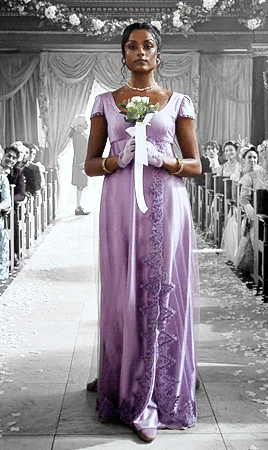
#bridgerton#kate sharma#period costume#indian queens#19th century attire#indian queens in western attire#regency#victorians#costume history#indo western#colonial indian history
79 notes
·
View notes
Note
Few things i wanted to adress real quick, don't worry it is nothing bad.
1: I wanted to thank you for bringing this amazing universe to my attention, i binged the comic, watched the film, looked at the concept arts etc., i am so invested in this, the author did such a good job at creating the atmosphere of the 1920s and everything around it
2: Now i got a question, if you maybe got some references towards the style(mostly just hairstyles) of the 1920s, cause i can't for the sake of my life, find references for the braided, pined or other hairstyles of this period, only for the bobstyles(which makes sense, since it was a widely spred new style), and now i wondered if you got some references for the other hairstyles of this period?
Does that all makes sense, i hope so, also i am looking foward to see more of your work. Much love <3
Yessssss. Another one of us. It really is a beautiful piece of art and historical fiction that I wish more people looked into! Cut because there's lots of pictures.
For the hair - google is pretty great for this, especially when you get specific. There were the classic bobs (both for straight and curly hair), but also updos and buns. Many women in rural America still had long hair they kept up in simple buns or buns with braids - the overly complicated "big" hair of the 1900s-1910s was out. The bun was usually at the nap of the neck or higher. Braids were considered more childish, especially just worn by themselves.
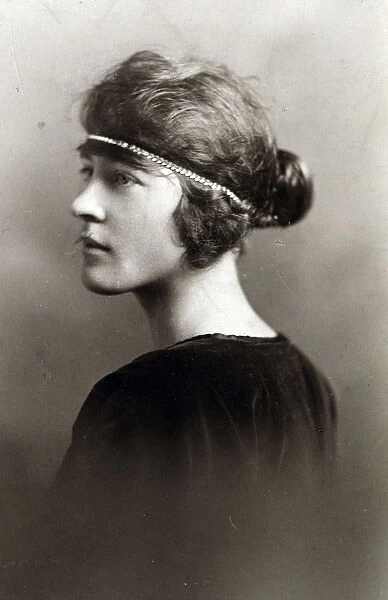
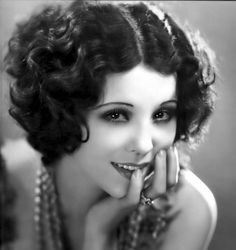
There were also faux bobs for women who wanted to keep their long hair but also follow the trend. Not having your hair styled in some way was seen as being unkempt; so no wearing long flowing hair unless you're settling down for bed. A pinned faux bob looks just like a real one if done right.

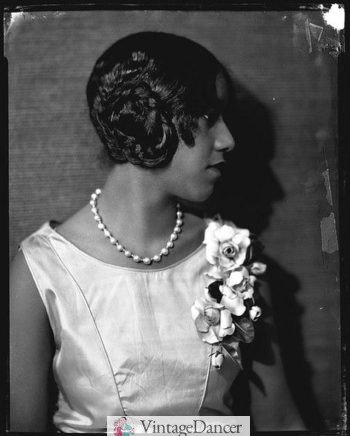
Black women styled their hair to fit the trends as well - lots of sleek straightening one's curls, dramatic waves, or natural hair piled on top while the rest is pinned/gelled back. They could also style long hair into faux bobs ... don't underestimate the power of a million bobby pins and a nice hat.
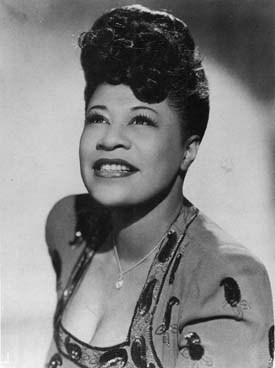
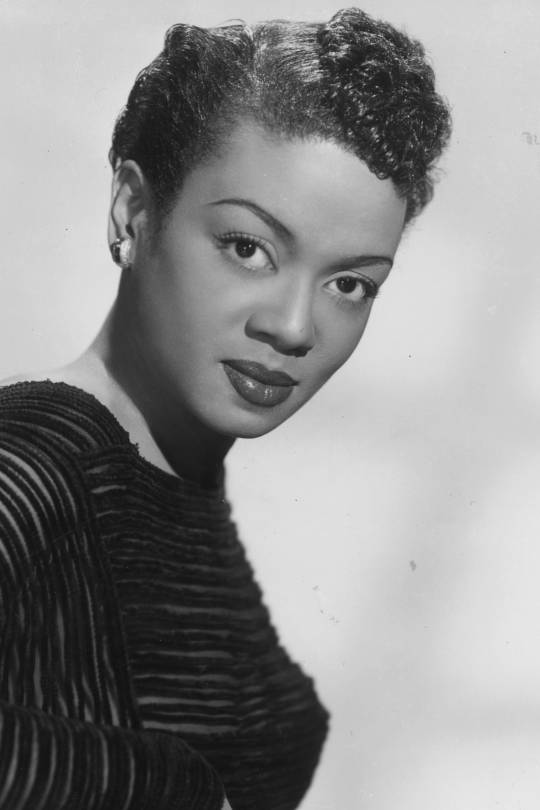
Looking up actresses of the era helps as well - Josephine Baker had very dramatic short hair, Louise Brooks had the flapper look, Clara Bow had beautiful big curls she'd pin into a "more controlled" bob, Mary Pickford was well known for refusing to cut the curls that were her signature less than a decade ago, etc.
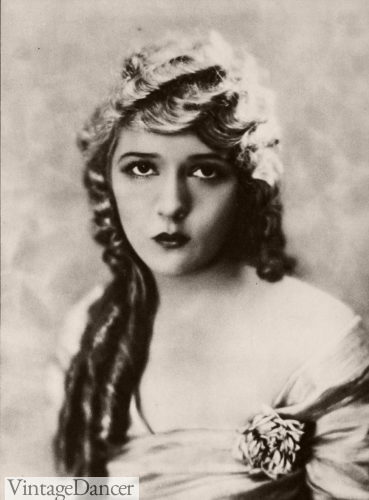

Also, severe blunt bangs were really only styled with straight bobs. Curly bobs, long hair, buns, etc lacked any kind of fringe. It was usually a middle or side part. The long-ish blunt bangs of a flapper bob could really exaggerate their heavy eye make-up and dark hair.
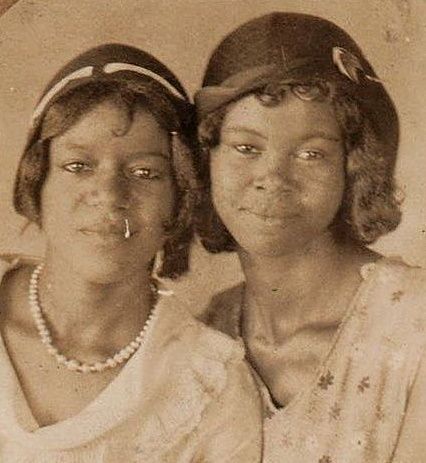
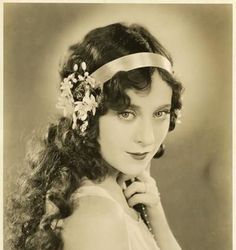
Though we strongly associate the 1920's with flappers and bobs, at the time it was super scandalous. A family could have an uproar over their daughter cutting her hair.
Vintage Dancer is one of my favorite websites for historical fashion, undergarments, hair, etc - they have great articles with pictures and context for more research. Googling photos of ordinary women in addition to actresses of the time can be useful as well.
12 notes
·
View notes
Text
The Reeses, "Wolfhead Undergarments" ad, 1918
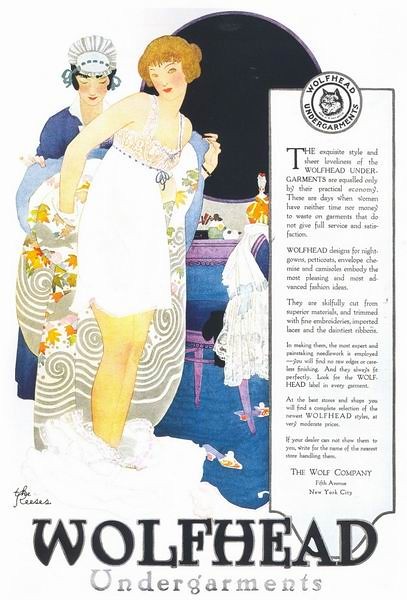
From Taschen's "All-American Ads 1900-1919".
2 notes
·
View notes
Text

Torii Kotondo (Japanese, 1900-1976)
Long Undergarment
66 notes
·
View notes